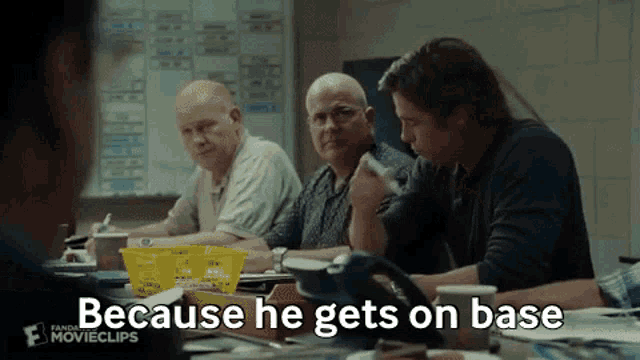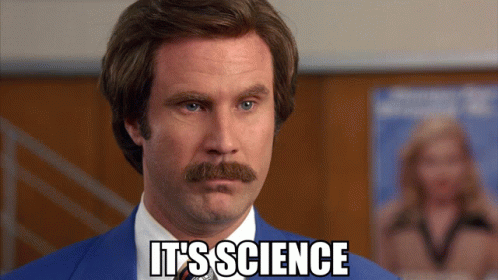Address
304 North Cardinal
St. Dorchester Center, MA 02124
Work Hours
Monday to Friday: 7AM - 7PM
Weekend: 10AM - 5PM
Address
304 North Cardinal
St. Dorchester Center, MA 02124
Work Hours
Monday to Friday: 7AM - 7PM
Weekend: 10AM - 5PM

We all know that the Baseball has changed and after a month into the season it is time for us as the fans and fantasy world to make an adjustment on our perception. The era from late 2016 through parts of 2021 when the Baseball was launching out of parks continually every single night are over (for now).
During this time frame we saw people start to get enamoured with Barrel rates and other metrics which became more popular as Statcast data became more accessible to the common person, even making it’s way onto daily MLB broadcasts.
I am here to tell you that you are behind the curve if you are still relying on that information and nothing else. The fascination with the long ball is clearly not in the plans of Major League Baseball the way it once was and given that they are so hell bent on “speeding up the game” to draw more TV contracts I don’t see them wanting to have 14-11 games where a million pitchers are used and the entire game is nothing but homers, walks and strikeouts.
Honestly, good. I am glad Baseball is doing this. But lets not remember how we got into this mess in the first place and that is because of Baseball itself, so no, I am not giving Rob Manfred a pass here one bit.
I’m not embracing the use of humidors in every stadium or Camden Yards pushing their left field fence out into Towson, Maryland or a bunch of other moves around the league which feel like putting sticky notes on a wall and see what sticks, but I also am happy to not be waking up at 4:30 am each day to set my KBO lineups.
But I am embracing the new Baseball and so should you.
One of the biggest things I have seen over the first month of the season is a lack of true hitting talent around the league. The era of being able to flip the bat out and hope for proper launch angle to get it out of the park is gone and good. Daniel Murphy should have never become Daniel Murphy and so many other hitters who weren’t power guys that suddenly became 30+ HR guys shouldn’t have been able to do so with tennis balls. Now they are forced to adjust and in DFS and Fantasy, we are forced to do the same as well.
We should still be chasing home runs. We should still be looking for guys who make premium contact, get the ball off the ground and hit the ball hard. None of that basic common sense is gone.
However, we’re going to be left disappointed if we keep following the Twitter accounts that tell us when someone barreled a ball 375 feet for an out or they had an xAVG, xWOBA or xSLG on a ball that you predicted they would only to see it caught because of a 4 man outfield or they hit it into Mt. Baltimore at Camden Yards.
So, in the true spirit of the Major League Baseball Administration, I threw a bunch of thoughts against the wall and came up with something new.
[spacer height=”20px”]
Introducing, the FBM. Which stands for Fricken Bob Manfred!
It stands for this simply because I could not come up with something more creative, but here’s what the true formula is….

fbm = (((HH% + LD% + Pull% – O-Zone Whiff %) * (Chase %)) – (Fly Ball %)) * (Zone Contact %)
Now, I can see what you are thinking already. That’s a bunch of random shit thrown together…. And…. Well…

Yes, it is.
But it all has a purpose.
The key three elements are Hard Contact (HH%), Line Drives (LD%) and Pulling the Ball (Pull%). Players for years have been re-inventing their careers by becoming Hard Pull hitters (Justin Turner for example) and the new ball has shown that the longer it is in the air, the more drag it will have. We also still want guys who don’t simply hit ground balls and with the defensive shift still around, we need the ball to travel fast and get to its destination without going through a defensive player or being dragged down by the ball being a drag (pun intended).
So far in 2022, Aaron Judge leads with a 67% Hard Contact Rate, Jorge Mateo, Alec Bohm and Ji-Man Choi are all above 40% in Line Drive Rates and Jason Heyward, Joey Bart and Oscar Mercado lead in pull rates above 60%.
Obviously out of those guys Judge is the one you’ll look at and say cool, he fits, but those other guys kinda stink so why do we want a metric focused on them?
Well… That’s where the other part of the equation comes in. MLB wants players who are going to put contact on the ball, right? And so do we. The Joey Gallo’s of the world can bitch and moan about the shift all they want but the fact is the new trend is going away from those type of players and I say … Good!
The days of ignoring K% and just looking at Launch Angle, Hard Hit Rate and Exit Velocity are dwindling down, so we want to accept a guy hitting doubles into the gap or just simply getting on base every once and a while.
So the contact elements come into play.
O-Zone Whiff % = Dont Swing and miss at pitches that are off the plate.
Chase % = The total amount of pitches that the player swings at off the plate.
Zone Contact % = And last but not least, dont miss on pitches in the zone. I am talking to you Brett Phillips.

And then we also want to take into account that there are guys who will hit the ball hard and with good contact but they’re simply being “unlucky” by the old standards because they’re hitting it too high.
Fly Ball % = Because we want the hard contact but more with Line Drives and not ‘Too High’….

So what does all of this lead us too? Well, we are once again looking for players who are going to hit the ball hard and then they do they hit it on a good plane where it will find grass or the potential to get out of the park and the more they can pull the ball the better because the days of flipping the bat out and hitting an opposite field HR off a 98 mph fastball are a thing of the past.
So if you are still focused on xSLG, xWOBA and other statcast metrics which are resulting in “unlucky” outs as you say, stop. You are on the wrong bus and while the warmer months will help in July and August it will only help EVERYONE involved.
Let’s look at the leaders of the FBM through the first month of the season compared to their average DraftKings Points per Plate Appearance to find out who is providing the best results.
[spacer height=”20px”]
Here are the players sorted by highest FBM through May 7th games.

Wander Franco should be a no brainer for this type of metric and he is among the leaders with more than 2 fpts per PA this season. Franco is someone I expected to see here given his high contact rates and solid Hard & Pull contact metrics as well.
Manuel Margot on the other hand was very eye opening and he is off to a fantastic start in 2022. One key thing with both Margot and Franco is that their line drive rates are up 10-13% year over year from 2021 to 2022 and that is no doubt a big reason for their success. Margot was also someone who didn’t really fit in during the juiced ball era since he didn’t put the ball in the air much, but now? Now, he’s not so bad as he also does not strike out or have whiffs outside the zone much.
Vlad Guerrero Jr might have a future in this game.
Alec Bohm took a lot of beef last season for having a down year and struggled defensively to start 2022, but he has quietly been good of late and you can see if they decide on a specific batting order spot for him he could potentialy blow up. His Pull rate from 2021 is down about 9%.
Another Tampa Ray in Harold Ramirez shows up and the problem with Ramirez is that his GB% is too high and honestly I have thoughts on tweaking the metric to account for a GB% that is too high being a negative.
Keibert Ruiz! The kid just needs to play and play in a better lineup, but it’s kind of encouraging to see him flare up here and the incredibly high pull % is going to make him a consistent option. Same is true for Josh Naylor who makes sense as a heavy platoon lefty bat.
Luis Robert brings me to the most interesting team with this statistic, the Chicago White Sox

Jose Abreu was off to a cold start and his 10% LD% which is down about 10% is a major reason why. I don’t think I have seen a team with more fly ball outs so far this season than the White Sox and the low FBM’s for Abreu, Grandal and Pollock certainly make this stand out as a team who if they get things corrected in that department can solve issues. Not to mention we’re missing Eloy and Moncada due to limited PA and if those two can improve in this area it could be a lineup that starts to get hot.
[spacer height=”20px”]
In summary I wanted to try and measure the hitters who I think are putting the right type of At Bat’s together based upon how the new Baseball is played and I believe we are going to definitely see a change in approach for many batters which makes this a measurement to monitor over time on the players. My next goal is to try and develop the FBM by pitcher hand as well and also measure it on a bi-monthly basis to see which players are trending right.
Is the metric a perfect science that a Data Scientist would support? Probably not.
Can it have someone come along and tweak it to maybe make it better? Possibly.
But so far it’s a good start and all I know is that the first day after I started using it, Manny Margot hit a grand slam.
